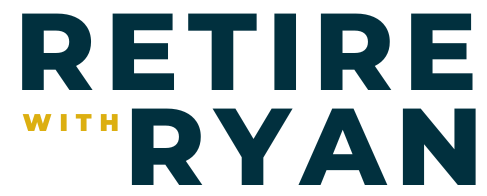Getting Emergency Money From Your 401k
One thing that many financial experts can agree on is the importance of having an emergency fund. Ideally, you should keep at least three to six months’ worth of living expenses in a readily accessible savings account. However, the reality is that many pre-retirees don’t have this amount saved in non-retirement accounts.
In today’s blog, we’re going to talk about how some recent changes allow you to access your 401(k) funds early, which can help cover emergency expenses as they arise. Now, I’m not suggesting that dipping into your retirement funds should be your first choice, but if you’re in a pinch, this could be an option to consider.
USING 401(K) FUNDS FOR AN EMERGENCY
It’s well-known that financial experts generally recommend keeping three to six months of living expenses in an emergency fund. The problem is that many people stash their savings in retirement accounts, which is great for long-term growth, but not always ideal for short-term needs.
If you’re in a situation where you need to access funds quickly, having money tied up in a 401(k) can present a challenge, especially if you’re under age 59½.
Normally, if you withdraw funds from a retirement account before that age, you’ll face a 10% penalty on top of any taxes you owe.
But there’s good news: a recent IRS rule change allows you to withdraw up to $1,000 penalty-free for personal or family emergencies.
WHAT QUALIFIES AS AN “EMERGENCY”?
Well, the IRS leaves that up to you. You’ll need to fill out paperwork to attest that it was indeed an emergency, but the IRS is essentially leaving it to your judgment. Of course, this is on the honor system, so make sure your reason for withdrawal is legitimate.
However, there are some important limits to be aware of:
You can only take one emergency distribution per year.
You can’t take another emergency distribution for three years unless you pay back the first one.
These limits are designed to protect your retirement savings, as retirement accounts are meant to grow over time. They’re not intended for short-term access.
While $1,000 may not seem like a lot, it can cover smaller emergencies, like a car repair or a minor home issue. But if you’re facing a larger, more expensive problem—say, a new HVAC system or a roof replacement—$1,000 probably won’t go far.
BUILDING YOUR EMERGENCY FUND
If you don’t already have an emergency fund in place, I strongly encourage you to start building one.
Start small and contribute regularly—say, $100 per paycheck—into a dedicated emergency fund account. Over time, this money will accumulate, and you’ll be better prepared for unexpected expenses.
Additionally, make sure your emergency fund is earning interest. Most traditional banks offer very low interest rates, but there are better options, like high-yield savings accounts from online banks.
As of this recording, many online banks are offering interest rates around 4%. You could also consider using a money market account with a brokerage firm like Charles Schwab, Fidelity, or Vanguard. These options can help your emergency fund grow faster, earning interest rather than just sitting there.
WHAT IF YOU NEED MORE THAN $1,000?
While $1,000 is a helpful option for emergencies, it likely won’t cover large expenses.
If you find yourself needing more, there are nine other ways you can access your retirement funds before age 59½ without facing the 10% penalty.
I’ll cover these strategies in more detail next week, so be sure to tune in for that blog where I’ll dive into these nine scenarios in-depth.
CLOSING THOUGHTS
Building your emergency fund and understanding your options for accessing retirement funds can be key in navigating unexpected financial challenges. So, it is better to stay prepared and ahead of the game.
If you have a question or topic that you’d like to have considered for a future episode/blog post, you can request it by going to www.retirewithryan.com and clicking on ask a question.
As always, have a great day, a better week, and I look forward to talking with you on the next blog post, podcast, YouTube video, or wherever we have the pleasure of connecting!
Written by Ryan Morrissey
Founder & CEO of Morrissey Wealth Management
Host of the Retire with Ryan Podcast



